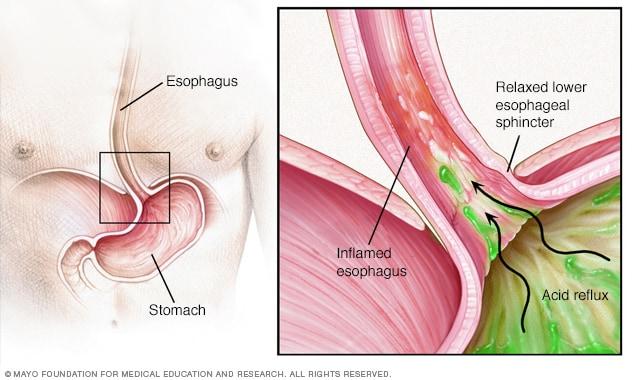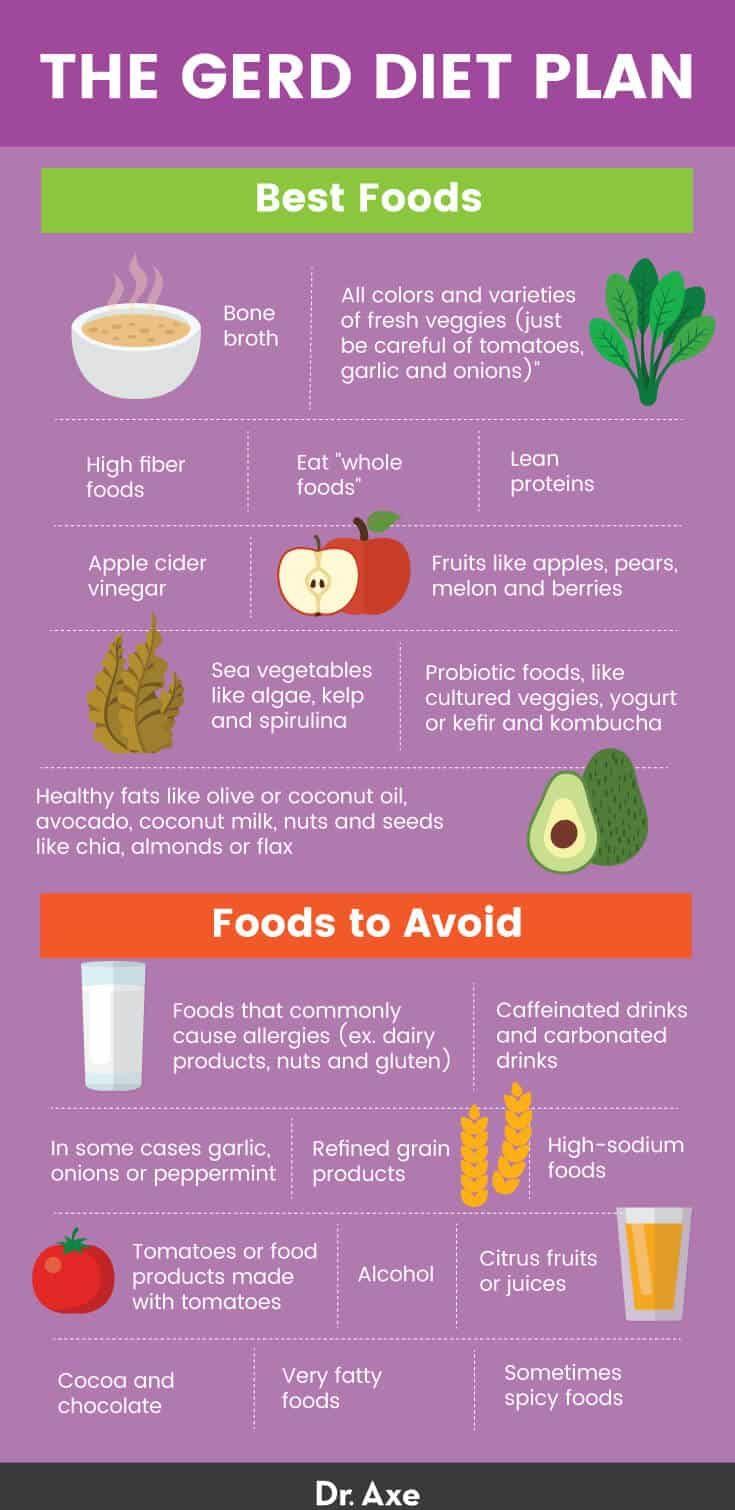Navigating the GERD Diet: A Path to Comfort and Wellness
In a world where culinary delights often take center stage, millions grapple with a hidden adversary: gastroesophageal reflux disease, or GERD. This silent struggle, marked by discomfort and disruption, can transform even the simplest meal into a daunting challenge. Yet, a well-crafted diet can serve as a beacon of hope for those seeking relief. The GERD diet, a thoughtfully designed eating plan, not only alleviates symptoms but also empowers individuals to reclaim their relationship with food. In this article, we will explore the principles behind the GERD diet, uncovering the foods that nurture well-being while steering clear of those that trigger discomfort. Join us as we embark on a journey toward understanding how mindful eating can pave the way for a more comfortable and fulfilling life.
Understanding GERD and Its Dietary Implications
Gastroesophageal reflux disease (GERD) is a chronic condition where stomach acid flows back into the esophagus, leading to discomfort and potential damage to the lining. One of the most effective ways to manage GERD is through dietary adjustments. Certain foods can exacerbate symptoms, while others can help alleviate them. It is crucial for individuals with GERD to identify their personal triggers, which can vary widely from person to person. Common culprits include spicy foods, citrus fruits, and high-fat meals, which can increase acid production or relax the lower esophageal sphincter.
In contrast, incorporating foods that are less likely to provoke reflux can be beneficial. Focus on alkaline-rich foods that help neutralize stomach acid, such as:
- Bananas
- Oatmeal
- Ginger
- Green vegetables
- Lean proteins like chicken and fish
Maintaining a balanced diet can significantly improve quality of life for those dealing with GERD. Below is a simple table to illustrate foods to avoid and those to embrace:
| Foods to Avoid | Foods to Embrace |
|---|---|
| Spicy foods | Oatmeal |
| Citrus fruits | Bananas |
| Chocolate | Lean proteins |
| Fried foods | Green vegetables |
Identifying Trigger Foods for Optimal Management
To effectively manage GERD symptoms, it’s crucial to identify your personal trigger foods. These are the specific items that can exacerbate acid reflux and lead to discomfort. Common triggers often vary from person to person, but some well-known culprits include:
- Spicy foods
- Citrus fruits
- Tomato-based products
- Chocolate
- Caffeinated beverages
- Fatty or fried foods
- Carbonated drinks
Keeping a food diary can be a beneficial tool in pinpointing specific items that trigger your symptoms. Note the foods you consume and any symptoms experienced afterward, which may help in recognizing patterns. Additionally, consider the role of portion sizes and meal timing as they can significantly impact reflux occurrences. Here’s a simple table for reference:
| Food Type | Potential Impact |
|---|---|
| Spicy Foods | Can irritate the esophagus |
| Citrus Fruits | High acidity can trigger reflux |
| Chocolate | May relax the lower esophageal sphincter |
Incorporating Alkaline Foods for Relief
Embracing an alkaline-rich diet can be a game-changer for those managing gastroesophageal reflux disease (GERD). Alkaline foods help to neutralize stomach acidity, promoting a more balanced internal environment. Incorporating these foods into your daily meals not only aids in relieving discomfort but also provides essential nutrients for overall well-being. Focus on integrating the following alkaline-rich foods into your diet:
- Leafy greens: Spinach, kale, and Swiss chard are excellent options.
- Fruits: Avocados, berries, and bananas can be gentle on the stomach.
- Nuts and seeds: Almonds and flaxseeds not only provide healthy fats but also contribute to alkalinity.
- Vegetables: Beets, broccoli, and cucumbers are both refreshing and soothing.
To ensure you’re consistently benefiting from the alkaline properties of your foods, consider planning your meals around this framework. Here’s a simple meal example to inspire your weekly cooking:
| Meal | Main Ingredients | Benefits |
|---|---|---|
| Breakfast | Green smoothie with spinach, banana, and almond milk | Rich in vitamins and helps to combat acidity |
| Lunch | Quinoa salad with cucumbers, cherry tomatoes, and avocado | Filling and hydrating, boosts energy levels |
| Dinner | Steamed broccoli and grilled salmon | High in omega-3 fatty acids and supports heart health |
The Role of Meal Timing and Portion Control
When managing GERD, the timing of meals can significantly influence how well symptoms are controlled. Eating at regular intervals throughout the day can help maintain a stable digestive process, reducing the likelihood of reflux. Consider the following strategies for effective meal timing:
- Avoid late-night eating: Aim to finish your last meal at least 3 hours before bedtime to allow for proper digestion.
- Smaller, more frequent meals: Instead of three large meals, try eating five to six smaller meals each day to lessen pressure on the stomach.
- Mindful eating: Take your time to chew food thoroughly and enjoy the meal, which can help prevent overeating.
Portion control plays a crucial role in managing the symptoms of GERD. Overeating can lead to increased stomach pressure and the potential for acid reflux. Implementing portion control can assist in alleviating this discomfort. Here are some tips for effective portion management:
- Use smaller plates: This visual trick can help you consume less while feeling satisfied.
- Listen to your body: Pay attention to hunger cues and stop eating when you feel comfortably full.
- Plan meals ahead: Preparing meals in advance ensures you stick to appropriate portion sizes.
| Meal Timing Tips | Portion Control Tips |
|---|---|
| Finish meals 3 hours before bed | Use smaller plates for meals |
| Eat 5-6 smaller meals | Pay attention to hunger cues |
| Practice mindful eating | Plan meals in advance |
Hydration Strategies to Support Digestive Health
Maintaining optimal hydration is crucial for digestive health, especially when managing GERD symptoms. Drinking water throughout the day helps to dilute stomach acid, reducing the likelihood of acid reflux. To enhance the benefits of hydration, consider the following strategies:
- Consume alkaline water: This can help neutralize stomach acid and provide relief.
- Infuse water with herbs: Adding mint or ginger can aid digestion and add flavor without aggravating symptoms.
- Limit caffeinated beverages: These can increase acid production, so opt for herbal teas instead.
- Stay hydrated with broths: Low-sodium vegetable or chicken broths can provide hydration while being gentle on the stomach.
Another effective approach to support digestive health is to focus on the timing and quantity of fluid intake. Sipping water between meals rather than during them can help prevent excess pressure on the stomach, reducing the risk of reflux. Here are a few tips for optimal hydration:
| Timing | Recommendations |
|---|---|
| Before meals | Drink a glass of water 30 minutes prior to eating to aid digestion. |
| During meals | Limit liquid intake to small sips to avoid overfilling the stomach. |
| After meals | Wait at least 1 hour before consuming significant amounts of water. |
Exploring Supplements and Herbal Remedies for GERD
When it comes to managing GERD, many individuals turn to supplements and herbal remedies as a complementary approach to traditional treatments. A variety of natural options may help soothe the digestive tract and alleviate symptoms, including:
- Ginger: Known for its anti-inflammatory properties, ginger can help reduce nausea and discomfort.
- Chamomile: This calming herb may aid in digestion and promote relaxation, potentially reducing acid reflux episodes.
- Aloe Vera: Often used for its soothing effects, aloe vera juice might help coat the esophagus and reduce irritation.
- Licorice Root: This herb may support the stomach lining and is thought to have a protective effect against acid.
Before incorporating any new supplements or herbal remedies, it’s essential to consider their potential effects and interactions. Below is a helpful table summarizing some popular options along with their key benefits:
| Herb/Supplement | Potential Benefits |
|---|---|
| Ginger | Reduces nausea and inflammation |
| Chamomile | Promotes relaxation and aids digestion |
| Aloe Vera | Soothes the esophagus and reduces irritation |
| Licorice Root | Protects stomach lining from acid |
Q&A
Q&A: Understanding the GERD Diet
Q1: What is GERD, and how does diet play a role in managing it?
A1: GERD, or Gastroesophageal Reflux Disease, is a chronic condition where stomach acid flows back into the esophagus, causing discomfort and a host of symptoms, including heartburn and regurgitation. Diet plays a crucial role in managing GERD, as certain foods can exacerbate symptoms while others can help soothe the digestive tract.
Q2: What are some of the common foods that trigger GERD symptoms?
A2: Common culprits include spicy foods, citrus fruits, tomatoes, chocolate, caffeine, and high-fat items. These foods can relax the lower esophageal sphincter or increase stomach acid production, leading to worsening symptoms. It’s essential to identify personal triggers, as they can vary from person to person.
Q3: Are there specific foods that can help alleviate GERD symptoms?
A3: Absolutely! Foods that are generally well-tolerated include lean meats, non-citrus fruits, vegetables, whole grains, and low-fat dairy products. Incorporating ginger, oatmeal, and aloe vera may also provide relief. The key is to focus on a balanced diet that avoids known triggers while promoting overall digestive health.
Q4: How can meal timing and portion sizes impact GERD?
A4: Meal timing and portion sizes can significantly affect GERD symptoms. Eating smaller, more frequent meals can reduce pressure on the stomach and esophagus, while large meals can lead to distension and increased reflux. It’s often recommended to avoid eating within three hours of bedtime, allowing the body to digest before lying down.
Q5: Is it necessary to completely eliminate trigger foods from my diet?
A5: While it may not be necessary to completely eliminate trigger foods, moderation is key. Keeping a food diary can help you identify patterns and decide which foods are worth avoiding entirely and which can be consumed in limited amounts. Tailoring your diet to your personal tolerance can make managing GERD more feasible.
Q6: What lifestyle changes can complement a GERD diet?
A6: In addition to dietary adjustments, incorporating lifestyle changes can greatly improve GERD management. Maintaining a healthy weight, quitting smoking, avoiding tight clothing, and reducing stress can all contribute to symptom relief. Elevating the head of your bed and practicing mindful eating can also make a difference.
Q7: Should you consult a healthcare professional when making dietary changes for GERD?
A7: Yes, consulting a healthcare professional, such as a registered dietitian or gastroenterologist, is advisable when making significant dietary changes. They can provide personalized guidance, ensure that your nutritional needs are met, and help you develop a comprehensive plan that addresses your specific symptoms.
Q8: What is the overall takeaway for someone looking to manage GERD through diet?
A8: The overall takeaway is that while a GERD diet can be highly individualized, focusing on whole, unprocessed foods, being mindful of meal sizes and timings, and understanding personal triggers can lead to significant symptom relief. With patience and careful planning, managing GERD through diet can be an empowering step toward better health.
The Conclusion
navigating the world of a GERD diet may seem daunting at first, but it offers an opportunity for renewed vitality and comfort. By embracing a balanced approach to food choices, individuals can reclaim their well-being and reduce the discomfort associated with acid reflux. Remember, the key lies in understanding your body’s responses and making mindful decisions that align with your unique needs. As you embark on this culinary journey, consider it not just a set of restrictions, but a gateway to discovering new flavors and meals that nourish both body and soul. So, equip yourself with knowledge, listen to your instincts, and savor the path toward relief and rejuvenation. Your taste buds—and your digestive health—will thank you.
